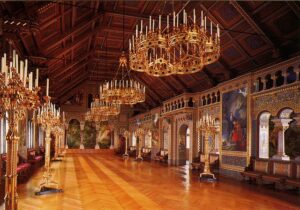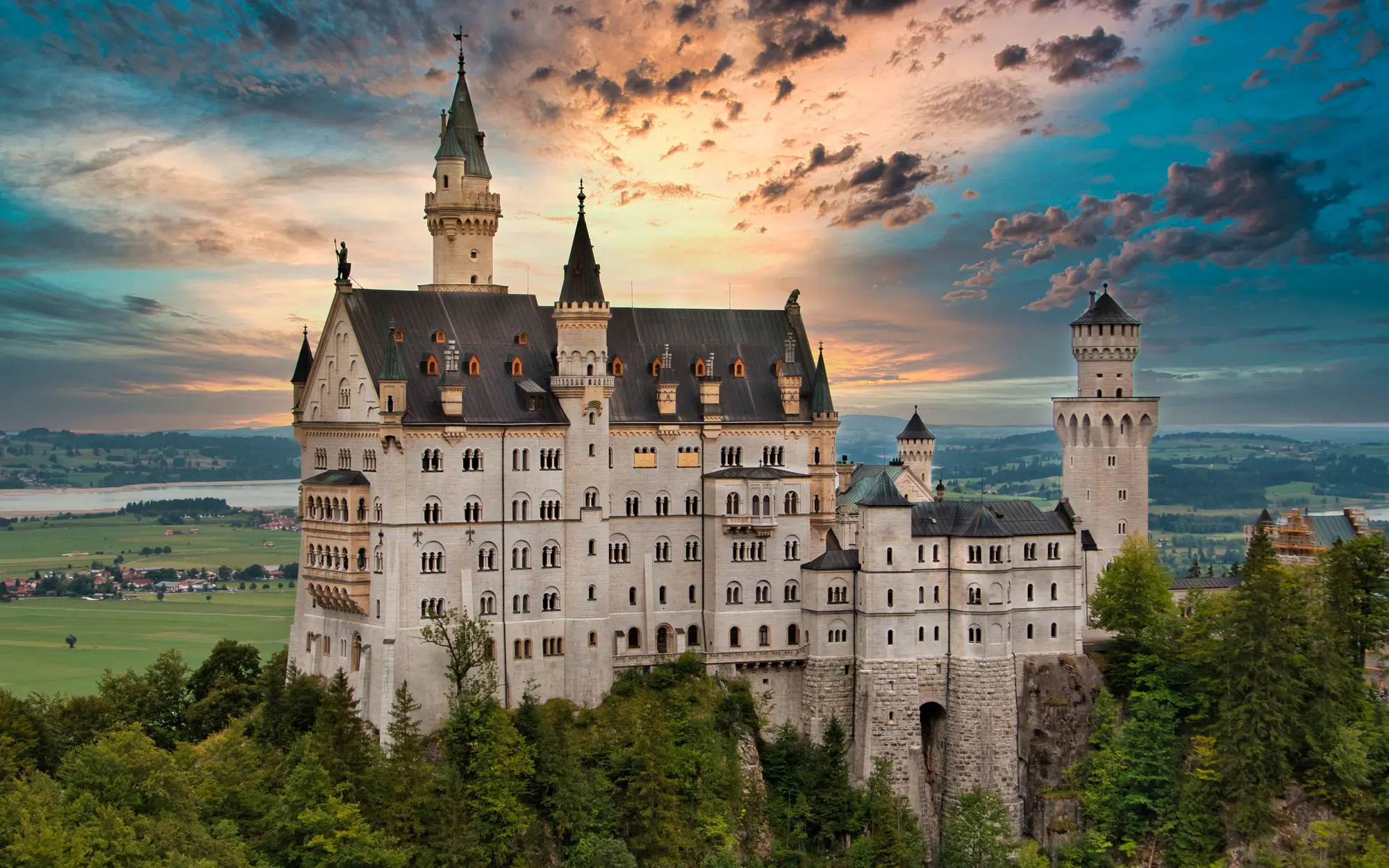Your basket is currently empty!
Introduction
Perched high in the Bavarian Alps, Neuschwanstein Castle looks like it was plucked straight from a fairytale — and that’s no coincidence. Often referred to as the “Disney Castle”, it was the inspiration for Sleeping Beauty’s castle in Disneyland. But behind its romantic towers and picturesque setting lies a fascinating story of obsession, tragedy, and architectural ambition. Built in the 19th century by King Ludwig II of Bavaria, this dreamlike fortress is more a monument to fantasy than a medieval stronghold.
The Vision of King Ludwig II
King Ludwig II, known as the “Fairy Tale King”, was a reclusive monarch with a deep passion for mythology, music, and the arts. He commissioned Neuschwanstein in 1869 as a tribute to composer Richard Wagner and as his personal retreat from public life. The design reflects Romanesque Revival style, but its construction techniques were thoroughly modern for the time. The king envisioned the castle as a theatrical stage — not for warfare, but for his imagination.
Architecture Inspired by Fantasy
Unlike authentic medieval castles, Neuschwanstein was never built for defense. Instead, it was designed to embody Ludwig’s romantic ideals of knights, legends, and Germanic myths. The castle features ornate halls, elaborate murals, and panoramic balconies. Technological innovations like running water, central heating, and even a telephone system set it apart from true medieval structures. It’s a perfect blend of ancient aesthetics and modern comfort — designed more for dreams than battles.
Influence on Pop Culture
Neuschwanstein Castle has had a profound influence on popular culture, especially after inspiring Walt Disney’s design for Sleeping Beauty’s castle. It is one of the most photographed buildings in the world, attracting over 1.4 million visitors annually. Its unique silhouette has become a symbol of fairytale castles globally. The castle also appears in movies, books, and video games — reinforcing its mythical status.
Mystery and Tragedy
Despite his artistic vision, Ludwig II faced political pressure and mental health rumors. He was eventually declared insane and mysteriously died shortly after his deposition in 1886. Neuschwanstein was never fully completed. Today, it stands as a monument to his unfulfilled dreams, forever frozen in romantic splendor. The castle’s history is as haunting as it is beautiful.
Visiting Neuschwanstein Today

Located near Füssen, Germany, Neuschwanstein is accessible by hiking trail or horse-drawn carriage. The interior is open to tourists, revealing intricate woodwork and rooms dedicated to Wagnerian operas. It is one of the most visited landmarks in Europe. For history lovers, architects, and romantics, it’s a must-see destination that combines fantasy and fact like no other.
Conclusion
Neuschwanstein Castle is not just a tourist attraction — it’s a symbol of imagination, art, and architectural beauty. Though born in the 19th century, it continues to enchant the world like a storybook brought to life. Its legacy lives on in films, theme parks, and every traveler who dares to dream.
Want to dive deeper into ancient warfare? Don’t miss our articles on Castles category.

